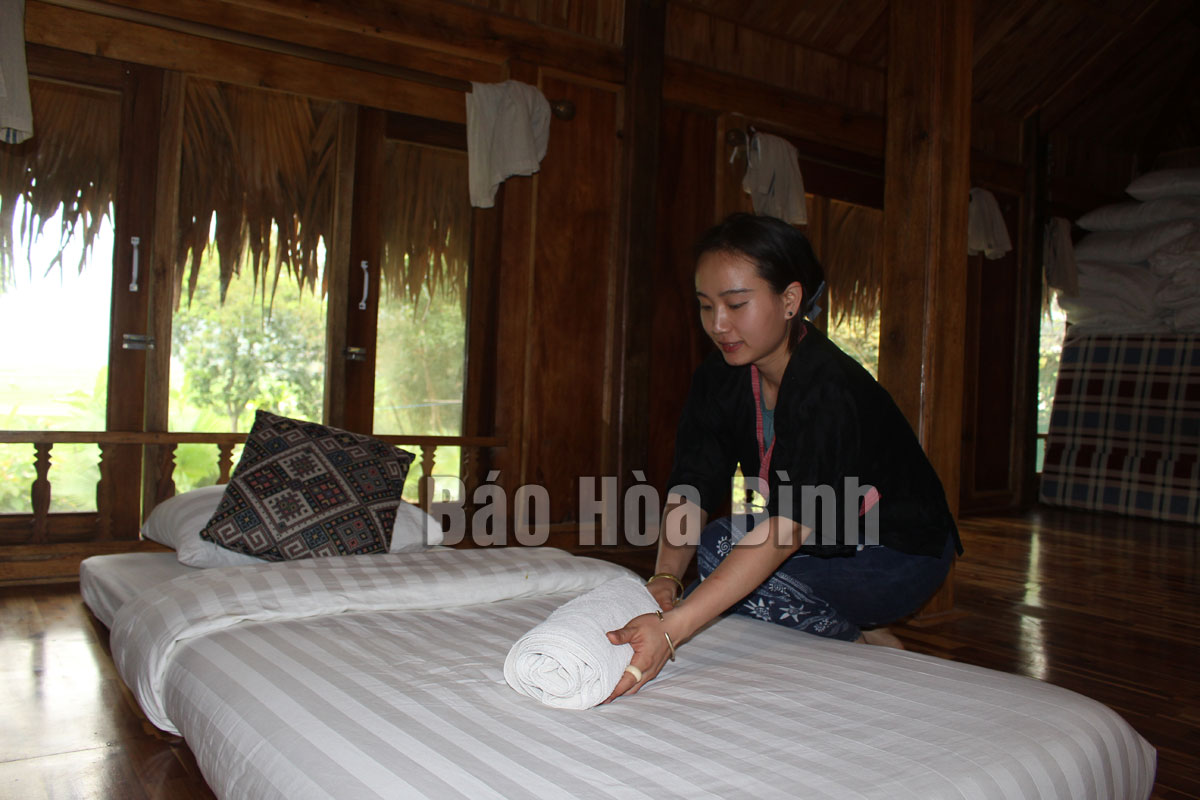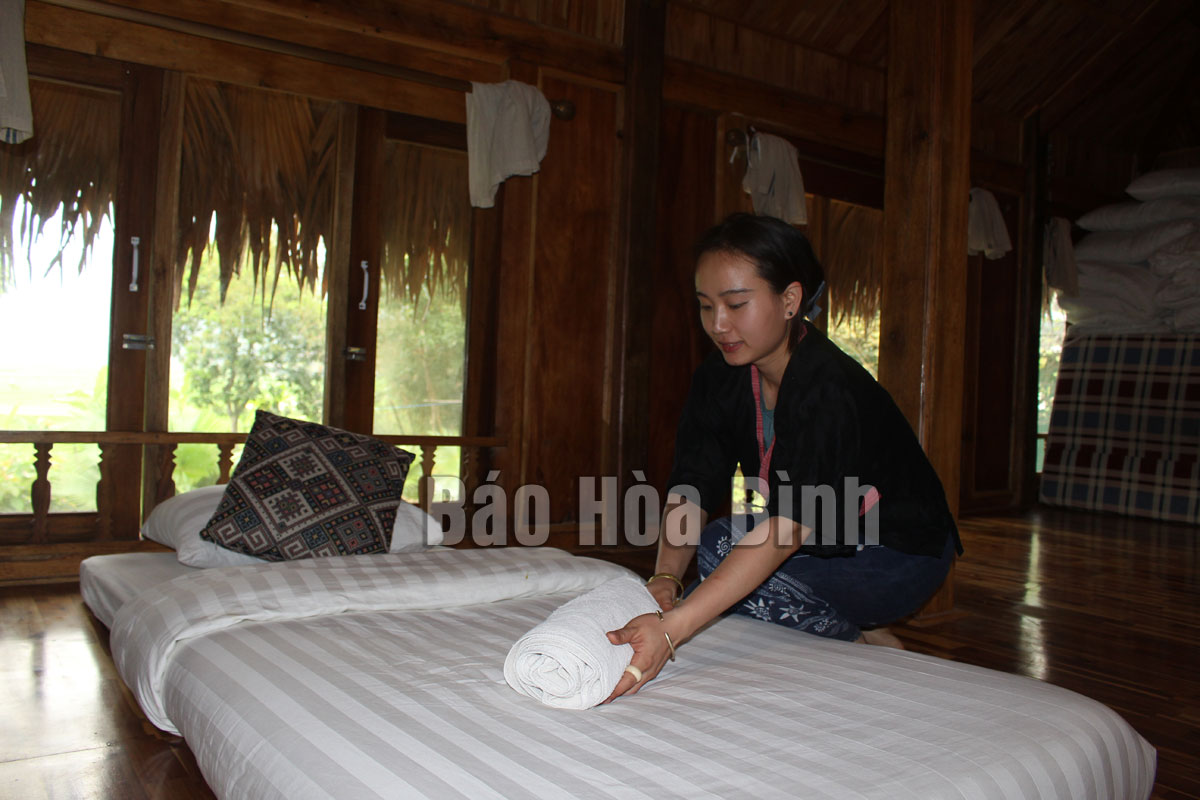
(HBO) - In the past time, rural tourism in Hoa Binh province has developed rapidly with many unique models attracting tourists such as experiencing orange gardens, tea hills or exploring natural reserve centres, craft villages and local culture at community-based tourism sites.
Developing
rural tourism has contributed to raising local residents's incomes. It is a
fundamental solution and a driving force to promote new-style rural area
building in a sustainable way.
Households engaged in community-based tourism in Lac village, Chieng Chau
commune (Mai Chau District) pay attention to improving tourism skills.
The province has potential to develop rural tourism, considering the richness
and diversity of local cultures and lifetyle of the Muong, Thai, Tay, Dao and
Mong ethnic groups that are preserved in each village.Natural
landscapes and unique ecosystems in nature reserve centres are also an
advantage.
Hoa Binh has set up concentrated agricultural areas towards organic production
and VietGAP standard such as fruit growing areas in Cao Phong, Tan Lac, Kim
Boi, Lac Thuy; and safe vegetable production areas in Luong Son district.
With such potential and advantages, the province will focus on developing
various types of rural tourism, mainly agricultural, community-based and
ecological tourism.
In addition to the rapid development of community-based tourism, in recent
years, some localities are paying attention to develop agri-tourism, with Cao
Phong district a typical example. From 2016, the district began welcoming
tourists to local orange gardens. The friendliness and hospitality of the
gardeners along with the beauty of ripe orange orchards have attracted a large
number of visitors.
Dinh Cong Su, Vice Chairman of the provincial People's Committee emphasized
that the tourism industry, with the typical imprint of each region and each
ethnic group, have gradually met the needs of visitors who want to visit and
gain new experiences. As a result, the landscape, environment, cultural and
spiritual life of rural areas have changed significantly, becoming liveable
rural areas.
Rural tourism has created jobs for local people, promoted the consumption of
agricultural products, especially those under the One Commune One Product
model, he said.
It has raised the capacity, knowledge and awareness of rural people while
helping preserve traditional cultural identities.
In the coming time, in order to create a connection between tourism,
agriculture and rural areas towards forming a highly competitive production
value chain, and improving local living conditions, it is necessary for
agencies and localities to coordinate to enhance their responsibilities in
State management of community-based tourism.
Special attention should be paid to areas where ethnic minority people reside.
It is essential to implement a master plan on community-based tourism
development and more investment should be poured in infrastructure.
There should be a close connection between community-based tourism and
agricultural tourism
The development of community-based tourism should be associated with
agri-tourism, craft village tourism and learning about OCOP products in each
locality.
Located just a 20-minute drive from Hoa Binh City, Ora Hill Farmstay & Glamping Hoa Binh is a captivating new destination nestled in Mo hamlet, Bình Thanh commune, Cao Phong district. Combining farming with leisure, this tranquil retreat is perfect for those seeking balance, joy, and an immersive experience in the expansive beauty of nature.
Muong Bi - Tan Lac is renowned as one of the four famous Muong regions in Hoa Binh province. Blessed by nature with a favourable climate and stunning landscapes, Tan Lac holds great advantages for tourism development. The local tourism industry has made remarkable strides in recent times thanks to the attention and support from the local authorities and sectors.
With its strategic location, well-developed transport network, and diverse soil and climatic conditions, Hoa Binh is emerging as a must-visit destination in Vietnam's northwestern tourism corridor. The province boasts numerous attractions, including the Kim Boi hot springs (Kim Boi district), the Dau Rong cave complex (Cao Phong), the Mai Chau valley (Mai Chau), and the iconic Hoa Binh hydropower plant.
The northern mountainous province of Hoa Binh has been listed among the 71 most beautiful places to visit worldwide by the prestigious US travel magazine Condé Nast Traveller.
Hoa Binh province’s rich natural and cultural resources position it as a prime location for developing community-based tourism (CBT). In recent years, support from central and provincial policies, as well as assistance from non-governmental organisations, have encouraged local ethnic minority and mountainous communities to actively engage in the sector.



